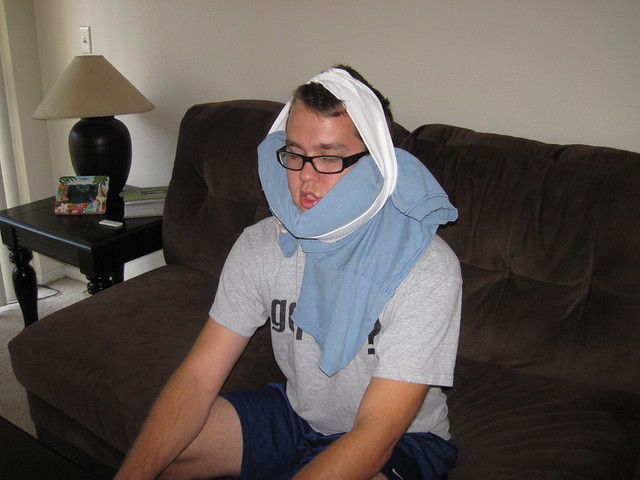An interesting article titled “Therapeutic efficacy of cryotherapy on facial swelling, pain, trismus and quality of life after surgical removal of mandibular third molars: A systematic review,” written by Larson et al. appears in the Journal of Oral Rehabilitation (2019). The article seeks to test the hypothesis that swelling, pain and trismus (limited mouth opening) is not changed from the use of cyrotherapy. Cryotherapy is where cold is applied to the skin for therapeutic purposes such as using ice packs, gel packs, cold compresses, and Hilotherm face masks. Cryotherapy is regularly used by athletes to treat musculoskeletal injuries. It is known that many patients are using cryotherapy after wisdom teeth removal already, see for example the post Recent Celebrities to have Wisdom Teeth Removal.
The authors were motivated to perform the study because facial swelling, pain and trismus had not distinctly been shown to improve the immediate quality of life after surgical removal of lower wisdom teeth. The authors also pointed to some inconsistencies in previous studies and no consensus regarding the optimal frequency and duration of cryotherapy sessions. In the study the authors conducted a search for randomized controlled trials in humans conducted up until July 17, 2018, using MEDLINE (PubMed), EMBASE database, and Cochrane Library along with hand searching of journals. The authors established a set of inclusion and exclusion criteria which included specifying at least 12 patients included in studies conducted and sufficient description in the numbers of surgeries conducted, the length patients observed, and the duration of cryotherapy used. A total of 37 articles were included and then after accounting for their criteria six studies were used in the authors qualitative synthesis. The number of patients in these six studies varied from 14 to 95. Continuous cryotherapy was used in three studies with the other three studies having intermittent cryotherapy. The authors found that the six studies had many variations in the type of cryotherapy, the length of cryotherapy, and how swelling, pain and trismus were evaluated. Pain was assessed in all six studies while facial swelling and trismus were assessed in five of the six studies.
Regarding facial swelling, the authors found intermittent cryotherapy during the first 24 hours statistically significantly reduced facial swelling after lower wisdom teeth removal when compared to not using cryotherapy. Furthermore intermittent cryotherapy seemed to have more effect on facial swelling than using a 24 hour continuous cryotherapy. Regarding pain, the authors found intermittent cryotherapy for 30 minutes every 90 minutes during the first 24 and 48 hours after lower wisdom teeth removal statistically significantly reduced pain compared with not using cryotherapy. The authors also found that continuous cryotherapy for the first 45 minutes after lower wisdom teeth removal seemed to reduce pain compared to not using cryotherapy. Furthermore, intermittent cryotherapy seemed to have more effect on pain than using continuous cryotherapy. Regarding trismus the authors found intermittent cryotherapy for 30 minutes every 60 minutes during the 24 hours after wisdom teeth removal had statistically significantly lower trismus than not using any cryotherapy. Furtheremore, intermittent cryotherapy seemed to have more effect than cryotherapy. In addition the use of both intermittent and continuous cryotherapy after wisdom teeth removal seemed to improve patient satisfaction and their immediate quality of life. The authors also noted there were not stastically significant differences in complications in patients using cryotherapy or not using cryotherapy when examining the four of six studies that discussed complications.

Based on their review of the articles included in the six studies the authors suggest that caution is warranted to widely apply their results. They suggest that additional studies are needed that have similar patient demographics and provide three‐dimensional assessment of facial swelling. The authors also suggest additional studies are needed that have a standard painkiller and antibiotic regiment given to patients. The authors also suggest that additional studies are needed that have standard health‐related quality‐of‐life questionnaires. Due to these deficiencies the authors state:
The hypothesis of no difference in facial swelling, pain, trismus and [immediate quality of life] after [surgical removal of mandibular wisdom teeth], with or without cryotherapy, could neither be confirmed nor be rejected due to inadequate knowledge. Short term intermittent cryotherapy statistically significantly diminishes facial swelling, pain, trismus and improved [immediate quality of life] .
Thus the authors would like to see additional studies conducted that address the prior studies shortcomings before they can feel confident in making any evidence based recommendations regarding the use of cryotherapy after wisdom teeth removal.
